Don't wanna be here? Send us removal request.
Text
Unique Tomb found in Denmark Contains Remains of Viking Powercouple
Archaeologists unearthed a tomb in southwest Denmark in a Viking burial ground containing the remains of a man and a woman, both presumably from high social status.
The unique structure found in Hårup was identified as a Viking dødehus, or in other words a death house. It contains three graves dating back 950 A.D. In the main part of the building the excavators found the remains of a man and a woman, along with a third grave, which seemed to have been added later, that contained the body of a second man.
The body in the main part of the building was buried along with a large battle-axe. It was a Dane-axe, which was to live with the words of Kirsten Nelleman Nielsen, the leader of the excavation “ something like the ‘machine gun’ of the Viking Age.”
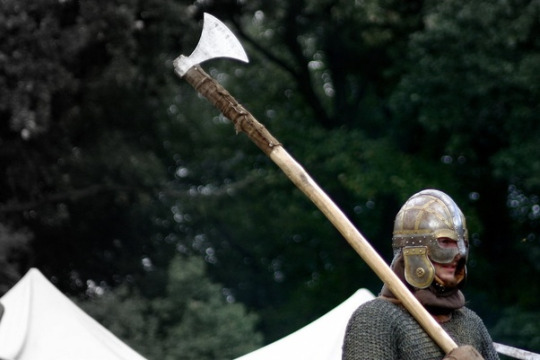
The woman in the tomb was buried in a wagon, which was common practice for Scandinavian women of noble birth. The archaeologists also found not one, but two keys buried with her, which symbolized the females’ control over the house and the domestic circle. This included the distribution of food and clothes among the family. One of the keys that has been found along with this particular woman served as, to live with Nielsen’s words again “ a symbol of her power and status as a great lady.” The other key that would fit for the lock of a small square shrine that was buried along with the lady is relatively rare, according to the archaeologists.
On the tomb, several markings and runes were found. Nielsen and her colleagues confirmed that they suggest that both the man with the Dane-axe and the woman with the two keys must have held a high rank in society during the Viking age and were worthy of a special burial. It is also significant that they were found within the same tomb. This was extremely rare with Viking graves.
Nielsen mentioned, that it is unusual when archaeologists can establish that the man and woman in question were equals in such certainty. The findings of her team suggest that the buried couple were most likely powerful, maybe they were rulers. While the other man buried along with them may have been their descendant, seeming that his grave was added later on.
The previous excavations in Danish Viking graves revealed that some women enjoyed a very high status and even held a considerable amount of power. These ladies were found buried along with grave gifts and in luxurious clothes. All of these indicated their privileged place in Scandinavian society. A perfect example for this would be the well-preserved ship dating back 843 A.D. that has been found in a burial mound in Norway, near the Lille Oseberg farm. The ship in question contained the body of a high ranking woman, now only mentioned as the “Oseberg Queen”
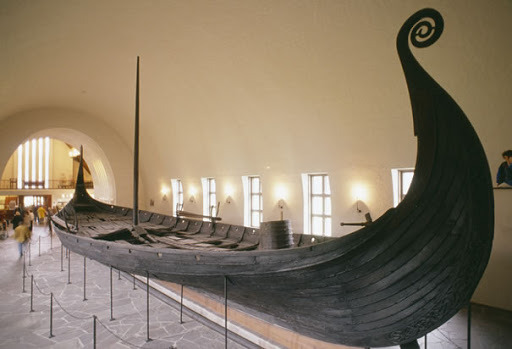
The idea of the tomb found in Hårup might cam from outside Scandinavia. For the archaeologists, it was clear that the couple buried there had international connections. Among other things, Baltic ceramics and silver coins from today’s Afganistan were found in the tomb.
Nielsen mentioned that the building has a similar style to that of the wooden stave churches that were common in Northern and Western Europe during medieval times. This is far from the first Viking tomb however that showed the traces of international influence. Thanks to their navigation and shipbuilding skills, the people of Scandinavia the Vikings sailed all across the world between the 9th and 11th centuries. Establishing settlements as far as North Africa, Constantinapole (where many of them became Varyags, The personal guards of many Byzantine emperors), Russia and North America. They were also successful traders. One of the recent excavation within a Viking woman’s grave from the 9th century revealed a ring engraved with Arabic markings, making it one of the rare pieces of physical evidence showing the connections between Vikings and the Islamic world.
Honestly, I came across the article in by accident, but after reading it I chose it as a topic because of the interesting fact of this kind of burial. For a long time, I always thought Vikings buried those who held a high status within their society, by constructing a ship, pushing into the water, then shoot at it with flaming arrows. I learned something from it.
https://www.history.com/news/unique-tomb-found-in-denmark-contains-remains-of-viking-power-couple
19 notes
·
View notes
Text
The influence of Norse Mythology and culture in literature
Although it is not well known the old Nordic beliefs greatly influenced literature especially in the 20th century. The book series in question I want to look at is the one that raised fantasy among the esteemed literary categories and affected the world in more ways than its writer possibly could have imagined. The series in question is no other than J.R.R Tolkien’s “Lord of the Rings”
Tolkien took a lot of inspiration from several sources including history and his own experiences. However, his biggest influence was Norse mythology. The perfect example of this are the races that are shown in his writing. Such as the stout dwarves, the noble elves or the savage trolls, whose origin and even personality can be traced back to the Eddas. For example, the dwarves in Tolkien’s writing are depicted as great warriors and revered craftsmen who live deep beneath the mountains in their mines and forges, such as Erebor and Moria. And the same can be said about them in their depiction in the Eddas. In mythology, they are best known for the creation of the symbols of the gods, Odin’s spear, Gungnir; Thor’s hammer, Mjölnir; Sif’s hair of pure gold etc.
Speaking of Odin, the king of Asgaard was also an inspiration for Tolkien. The All-father as he was sometimes referred to had the tendency to disguise himself as a frail, old, grey-robed wanderer in order to gain more knowledge and wisdom. Or to see which mortal is truly deserving of his favour. Does it sound familiar? An old man in grey robes who in truth belongs to a race of powerful beings?
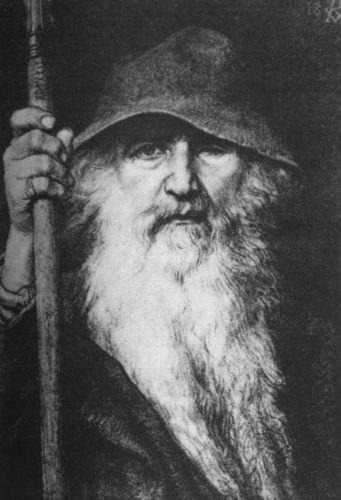
Of course, I mean Gandalf. Among other things I might add the Grey Pilgrim’s character was heavily based on Odin’s. In fact, in many cases where the Norse god of knowledge and war is depicted in his mortal form people tend to confuse him with Tolkien’s wizard. Gandalf actually has another reference to Norse mythology and that is his name. In the Eddas, the name “Gandalf” is mentioned as one of the most revered Dwarven warriors, who wielded a staff in battle. His name originates from the Old Norse words gandr (magic staff) and álfr (elf). One could say his name spoke for itself.
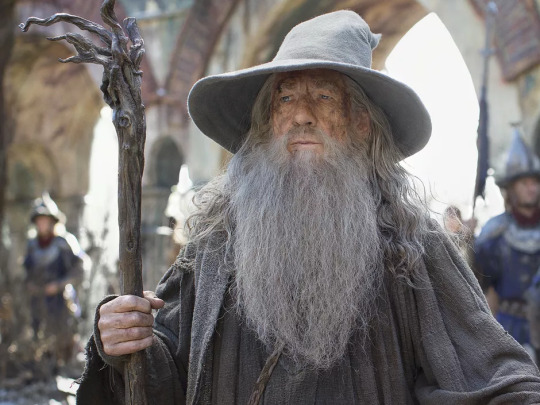
Tolkien took inspiration from Norse myths again when he wrote the prequels of his well-received work. In “The Hobbit” the leader of the Dwarven party, who set out to reclaim the Lonely Mountain from Smaug, Thorin Oakenshield bore both the name and personality of a mythological dwarf. Just like his Old Norse counterpart he is surly, illiberal, independent, proud, aristocratic, and like all dwarves greedy for gold. His name, meaning darer or bold one was an apt choice from Tolkien’s part in my opinion for the dwarf who started the quest to reclaim their ancient homeland from a dragon, fought in the battle to reclaim Moria when he was only 53 (which is considered very young for a dwarf) and held his ground with only an oak branch as a shield when his was broken in the heat of battle.
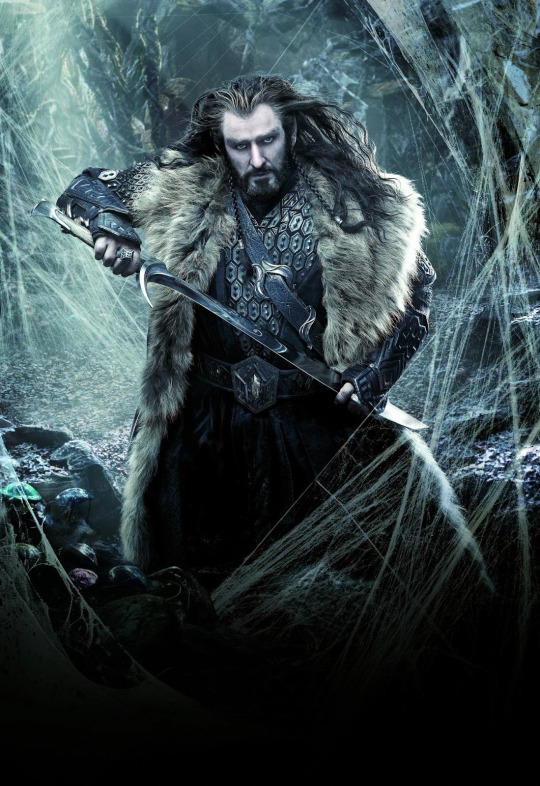
His nephews Kili and Fili also bore the names of dwarves from the Eddas along with four of his companions, namely, Bofur, Bombur, Bifur and Nori and his cousin Dain Ironfoot. These names can be found in the poem “Völuspá” which tells the creation of the world. The names of the companions and the cousin can be found in 11th stanza, while the names “Thorin and Gandalf” appears in the 12th. The names of the two brothers are found in the 13th stanza along with their uncle’s title “Oakenshield.” or as it is written in Old Norse “Eikinskjaldi.”
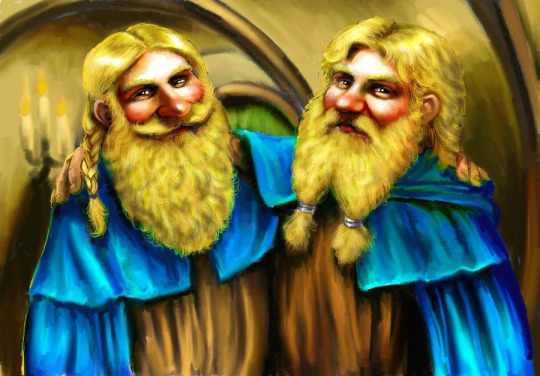
Kili and Fili as depicted in the books
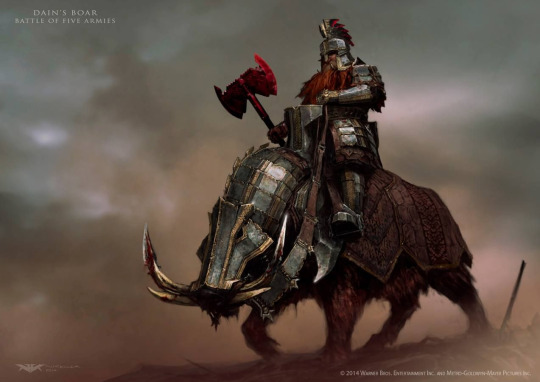
Dain Ironfoot
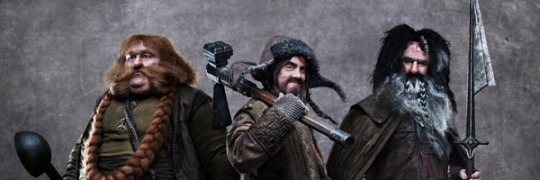
Bombur, Bofur and Bifur as depicted in the movies
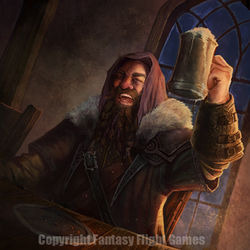
Nori
1 note
·
View note
Text
For Honor - Vikings
For Honor is a game where the warriors of 4 different factions, the Knights, the Vikings, the Samurai and the Chinese Wu Lin live in constant war with each other for dominance over the resources that remained after the cataclysm reshaped their lands.
In this entry, I want to take a look at the warriors of the Viking faction and see what aspects are fiction which ones stand closer to historical or mythical accuracy.
Vanguard - Raider:
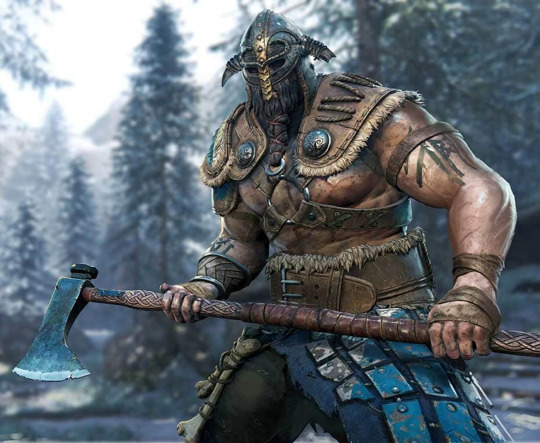
One of the characters with a somewhat easy to learn playstyle. The Raider in terms of look is closer to fiction than historical accuracy. Looking like what a lot of people imagine when they hear the word “Viking”, with hulking frame and armour that has little to no protection the Raider still can be one of the most destructive forces in the game. His weapon of choice the Dane axe is accurately shown from a historic point of view with a long shaft and relatively small head. His introduction trailer before the game’s launch did give a sort of explanation for the Raider’s lack of armour claiming that “The moment of a Viking’s death is chosen by fate.” and followed with two rhetorical questions “So, what use do they have for armour? Or of Fear?” Giving him this unstoppable and fearless warrior image.
Assassins - Berserker (Helvar/Siv)
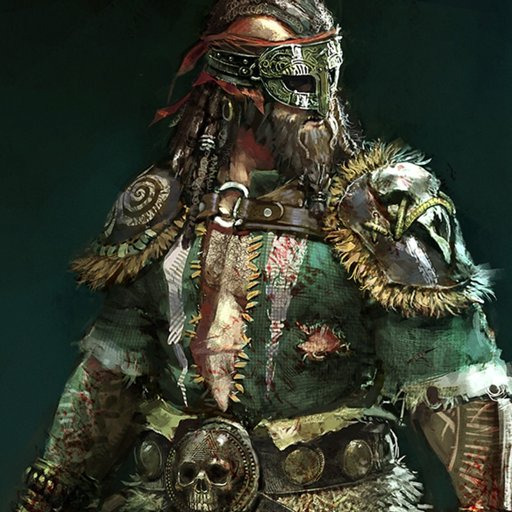
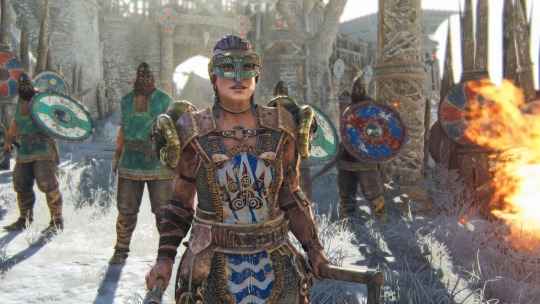
The Berserker is somewhat hard to describe in the standpoint of what is historic fact and what is fiction because even those chroniclers who wrote about these warriors kind of contradict one another. some said that they are nothing more than blood-crazed maniacs in battle, that can go in a berserker rage at any moment, while others said them to be the elite and most trusted guards of many powerful jarls and Norse kings. In the game, their preferred weapons of choice are two axes that they dual wield. However, in history their weapons varied from person to person. Some preferred to have a shield at their side, others, like the so-called Berserker of Stamford bridge favoured the Dane axe similar to the Raider. When it comes to looks in the game what I think stands out the most is the berserker’s faceguard, that (in my opinion) looks more like an armoured mask from a carnival than something a Norseman would wear. On their armour, they often wear the bones or skins of animals. This actually does have a sort of connection to history since it was a common belief that berserkers had a sort of ritual where they summoned an animal’s spirit to reside in their body and give them strength in battle. They often wore the skin and other remains of the said animal in order to summon its spirit with less effort. According to common belief, the ritual involved the consumption of some sort of halucinetic components, one of these is speculated to be the fly agaric.
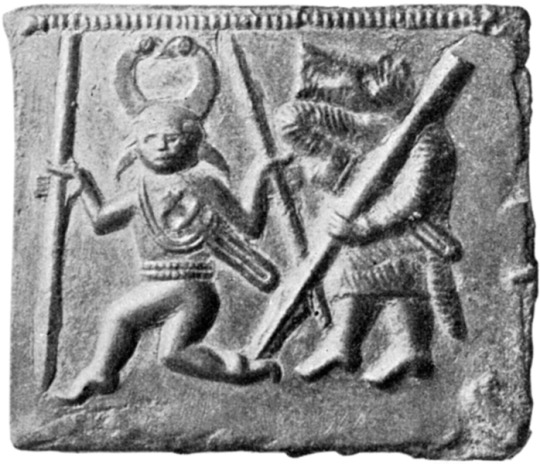
Berserker shown in animal furs and wearing a wolf’s head on one of the Torslunda plates found in Sweden.
Shaman:
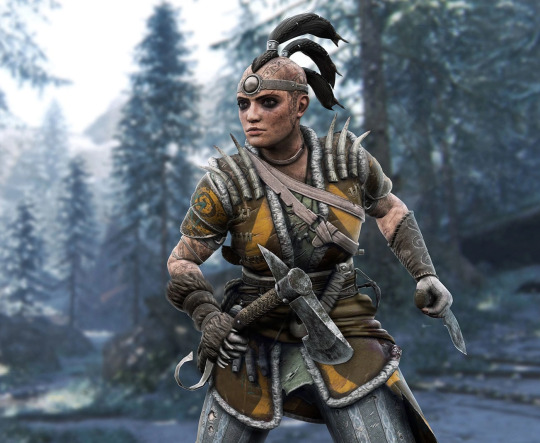
The second assassin of the Vikings that joined the roster. Often called “Berserker on cracks” by the player base because of her similar fighting style but faster attacks. Her weapons of choice are a hatchet and a kukri that she dual wields. An interesting and somewhat annoying mechanic of hers is that if she manages to stab her opponent during the end of her combo she applies a bleeding effect and she can pounce on them to take a bite out of their neck to replenish her own health. This can be dodged but she can keep doing it until the bleeding effect wears off or she runs out of stamina. In terms of historic accuracy Vikings didn’t have shamans as religious leaders. Their priests were called Goði (if male) or Gyðja (if female). Shamanism was a more common practice among the people living in Finland. (And a few of them still honour the old traditions to this day)
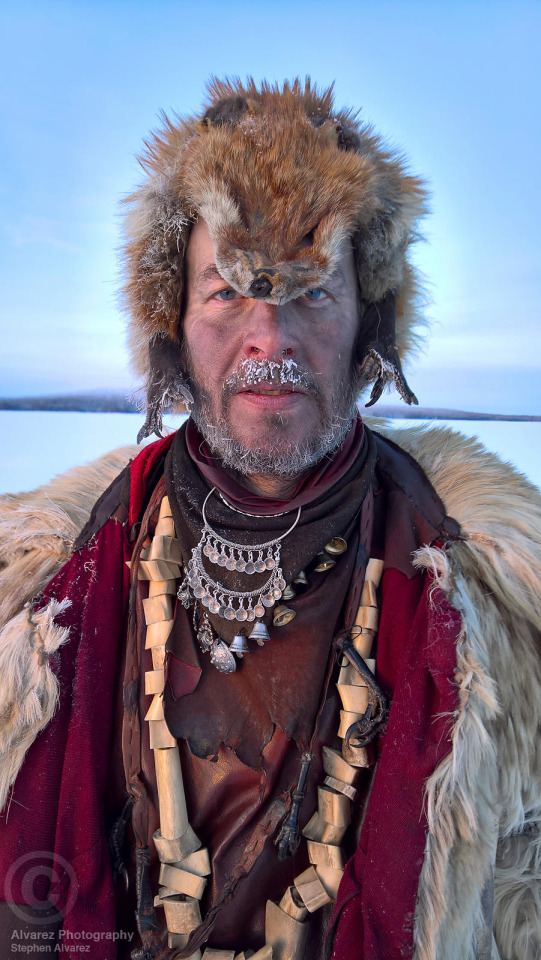
Jari Rorn a Lapland Shaman
Hybrids - Valkyrie (Runa)
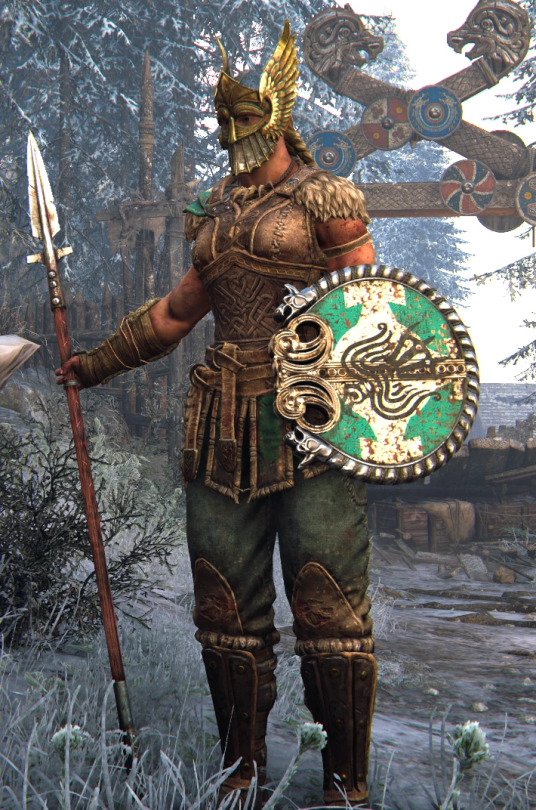
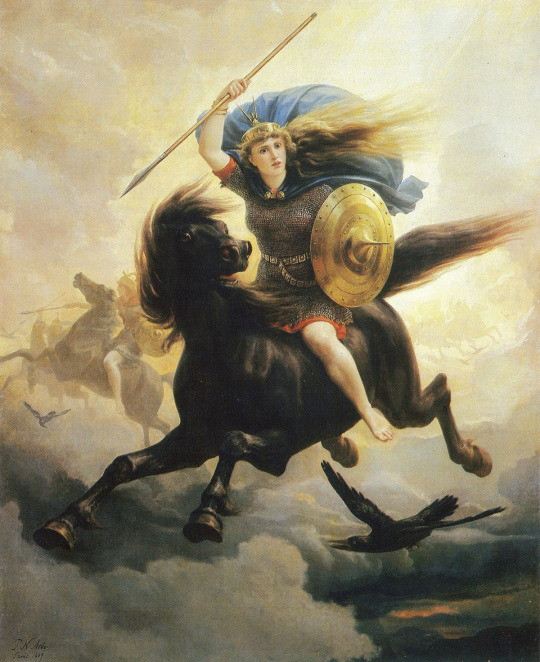
The Valkyrie named after the daughters of Odin who carry the souls of those who died in battle to Valhalla is perhaps closest to their source material among the warriors. Using a spear as a weapon along with a buckler for extra protection similar to their mythological counterparts who were often depicted using these weapons. Her choice regarding armour is quite simple. Made mostly from leather and fur it provides a certain amount of protection, but thanks to its small weight it also gives the Valkyrie plenty of speed. Making her one of the fastest heroes in the game. Their trailer mentions that they are first and foremost hunters, trackers and scouts, and all of these do require them to be as fast as possible. Another thing mentioned in the trailer that they often fight for those who can’t earn the right to die in battle anymore due to being crippled or too weak to fight, thus the valkyries fight in their stead to gain them entry to Valhalla. After that, they can fight for their own glory.
Highlander:
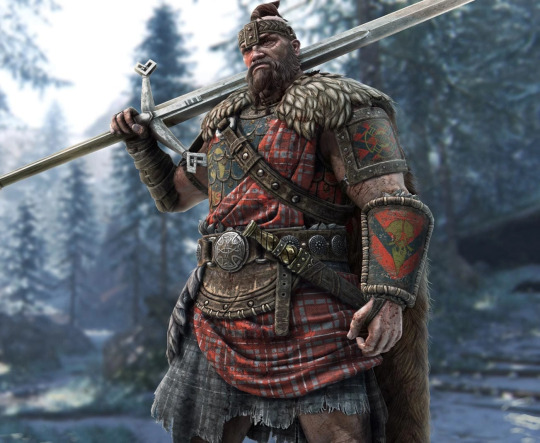
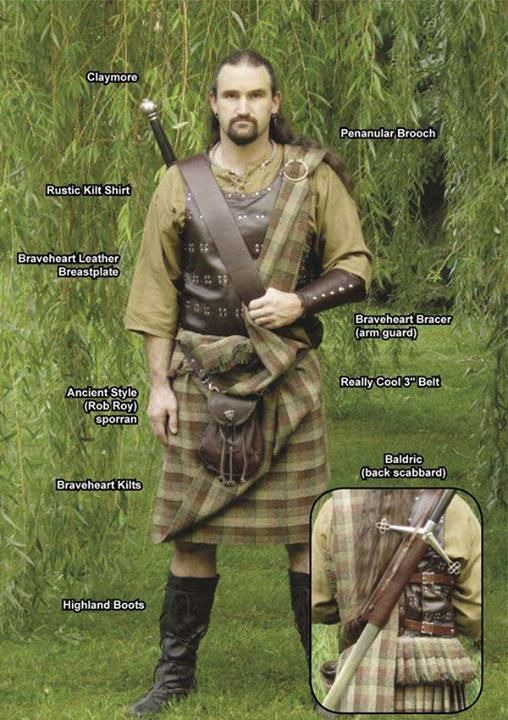
Similarly to the Valkyrie, the Highlander also doesn’t differentiate much from his source material. Wielding the claymore which is the weapon that became famous as the traditional weapon of Scottland. But it’s worth noting that his sword is a little bit bigger than an actual claymore. Over his scale armour, he also wears a kilt, giving another nod his Scottish heritage. Him being the only warrior with no Scandinavian origin in the Viking roster one might wonder how did he end up among them. His trailer states that his people made an ancient alliance with the Vikings, that kept their lands safe and now they are honour-bound to join the war. Despite his Scottish origins he actually speaks on his mother tongue only when he yells his battle cry. In every other occasion, he speaks Icelandic just like the rest of the Vikings. His battle cry: “Dunmaghlas“ meaning “ Touch not this cat!” was the battle cry of the Scottish clan, MacGillivray from which one of the game’s writers is hailing from.
Heavies - Warlord (Stigandr)
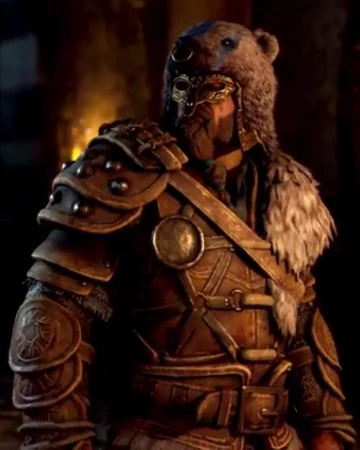
Modelled after the Viking Jarls the Warlord is the third warrior on the roster that stands extremely close to his source material. His weapon of choice, the Ulfberth sword along with a strong round shield further establishes that since among the people of Scandinavia only the richest could afford a sword others mostly had a one-handed axe and a seax as offensive options. In the Warlord’s reveal trailer three things are established.
1. The title of Warlord must be earned by service to all who need it, meaning that they can’t inherit the title from their father.
2. It emphasises an unspoken medieval ideology, “ The leader who doesn’t lead the charge is no leader at all.”
3. “They are the shield of our people” as in the leader must protect those who he leads.
Jörmungandr (Hulda/Gretar)
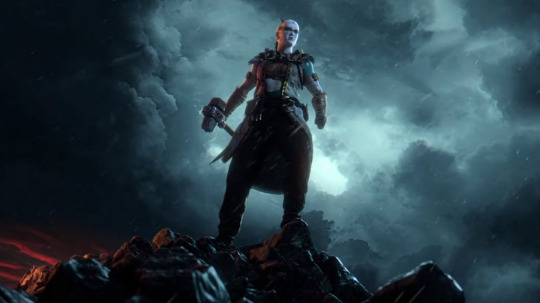
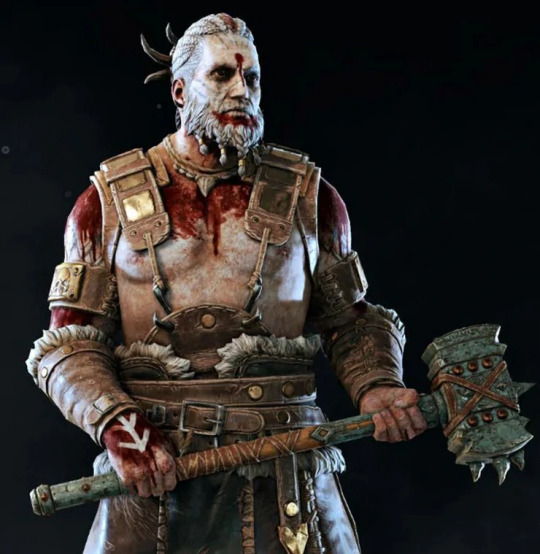
Named after the Midgard serpent, who they worship the Jörmungandrs in the game are sort of a fanatic cult. In order to be one of them, the initiates have to survive a deadly ritual. They pour acid on their skin in order to harden it with serpent scales. Those who survive this then have to withstand the pain as their limbs get crushed by a sacred Warhammer of the first Jörmungandrs. Only then can they rise as one of them. They have little connection to actual history or mythology save their name and weapon of choice. As mentioned before they worship Jörmungandr the Midgard Serpent who is destined to fight Thor when Ragnarök comes. Their Warhammer that they can wield in either one or in both hands can be considered a sort of reference to Mjölnir, Thor’s hammer. and during one of their special attacks, the so-called “Zealot’s Bolt” they even yell “ Við hamar Þórs!" which means “By Thor’s hammer!”
1 note
·
View note
Text
Everyday life during the Viking age
The people of Scandinavia were first and foremost farmers and craftsmen. They mostly grew barley, oats and rye. The animals they kept around were cattle, pigs, chickens, goats and horses. The preferred material for homes was timber. however, particular areas of Scandinavia lacked wood, so they used replacements, such as turf and stone.
The main sources of food beside of growing crops and keeping livestock were hunting and fishing. Whaling was also a common practice
The craftsmen made their tools, such as pots, knives, weapons etc. and sold them in the market, or in some cases even further away and brought goods, like silk, silver spices and fur back to Scandinavia.
The Longhouses consist of one big room which was shared by the family and some of their animals with a single hearth inside and the only way the smoke could leave was the blacksmith forge if they had one.
Unlike other people, the Vikings preferred oral tradition above all else regarding the stories of their gods and even laws.
The differences were settled during the occasional Thing. During a Thing, they vote about several things. (f. e.: To who a piece of land belongs too, or the fate of criminals). All of this was coordinated by a Law-speaker, who memorised the law. Those who committed a crime became outlaws, forced to live in the wilderness and anyone could kill them.
The other way to settle a difference was a duel known as Holmgang. The one who won was considered favoured by the gods.
Like in other medieval societies, the king was the most powerful among the nobles of Scandinavia, but the nobles (Jarls) did not swear felty to him, he had to keep paying them to keep them loyal. Jarls gained their wealth mainly by landownership or trading. Beneath them were the Karls (free people), their everyday jobs were crafting and farming. The lowest members of their society were the Thralls (slaves). They had to deal with the dirtiest and hardest work, they could be killed without punishment if they tried to run away. However, they were paid and with enough money, they could buy their freedom.
I chose this article because nowadays when people hear the word “Viking” all they can imagine is a half-naked bloodthirsty maniac who wants nothing more than killing and plundering and they completely disregard the way Norsemen truly lived.
https://www.bbc.co.uk/bitesize/topics/ztyr9j6/articles/ztqbr82
1 note
·
View note